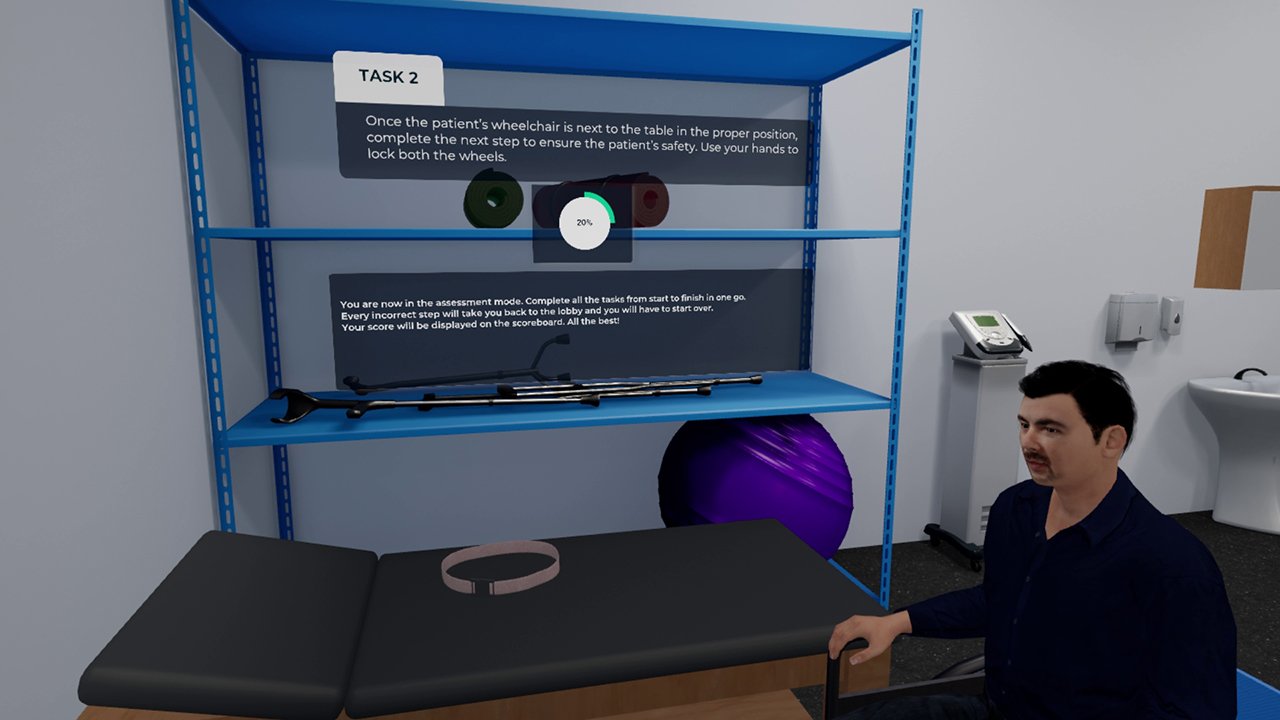Physical Therapy Aide
A Physical Therapy Aide is an important member of the healthcare delivery system. It requires a range of skill-sets that help the aides perform their tasks with expertise and finesse. The patient should feel at ease working with the aide and face the least possible discomfort in the process.
This VR program is designed to help physical therapy aides practice their skills is a safe environment with virtual patients.
- Positioning and turning a patient
- Assisting with a patient transfer using a transfer belt
- Training and assisting a patient to efficiently use crutches
- Practicing perform a range of motion exercises
- Practicing the skill of ascending and descending a wheelchair with a seated patient
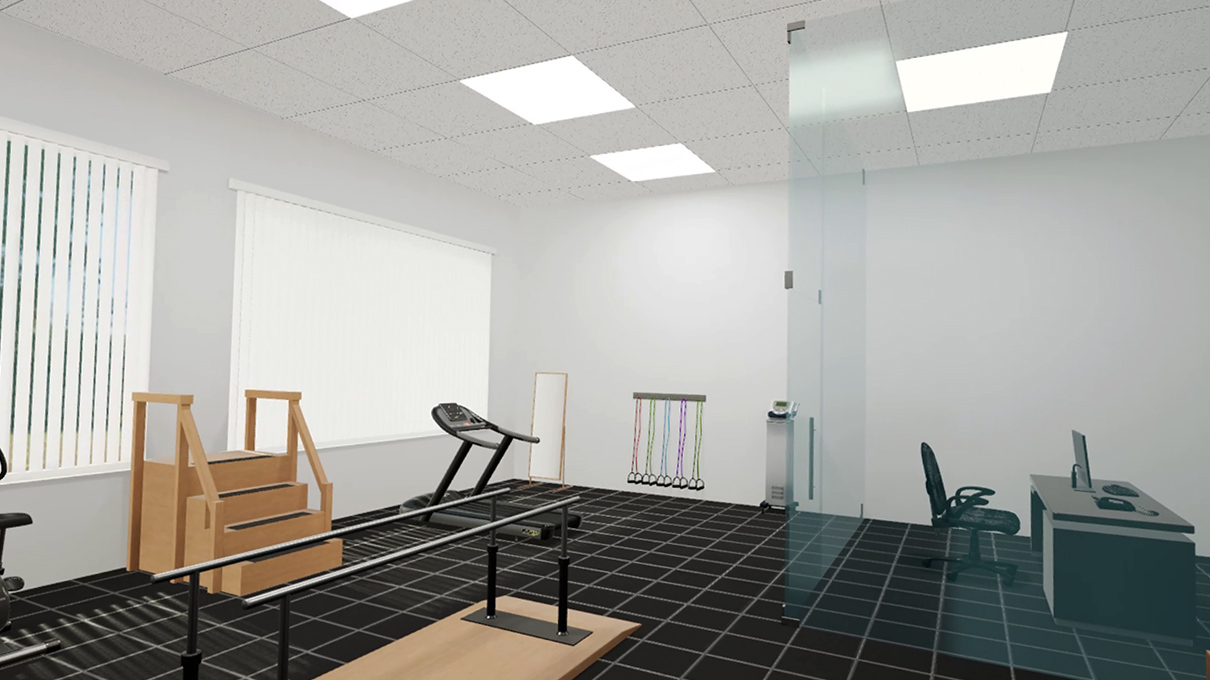
Developed in alignment with Physical Therapy Aide – A Worktext by Roberta C. Weiss (3rd Edition).
Customize Your Program
Get rid of the editor. Adopt in-VR customization.
MedVR Education is bringing to you in-VR customization that will enable you to customize your procedural simulations by making selections from a range of feature choices.
- Select patient from a diverse background
- Choose preferred virtual environment
- Select equipment used in the procedure
- Modify difficulty level of the assessment mode
- …..many more to come
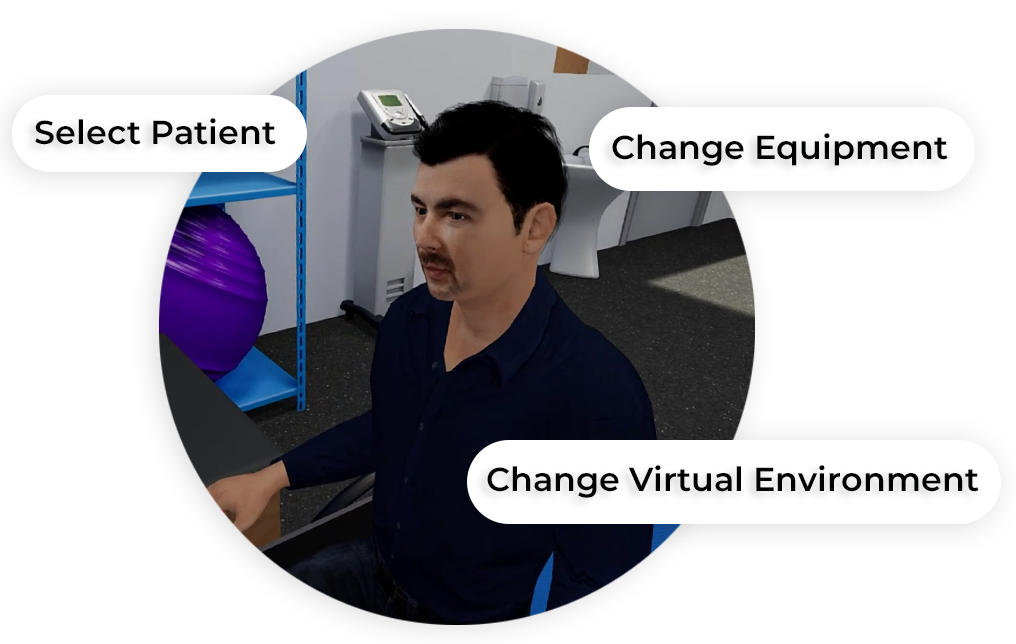
Core Skills Training
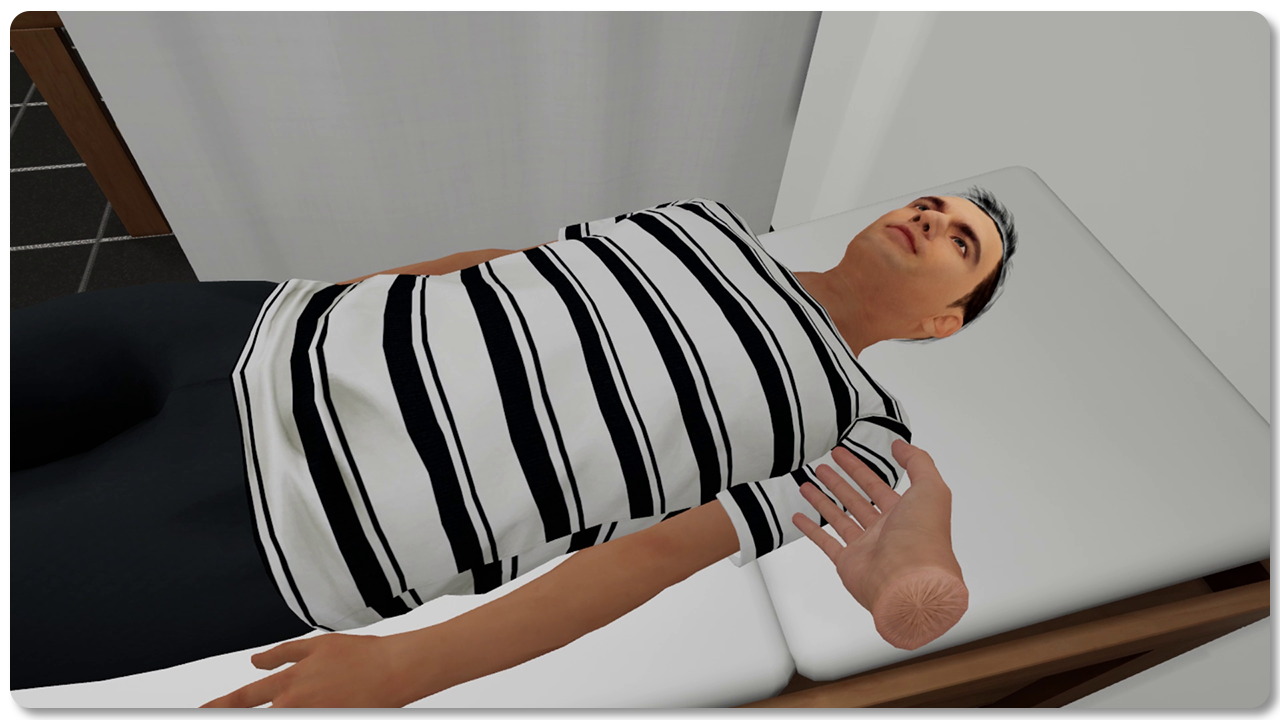
Positioning and Turning a Patient
A patient may be confined to bed for any number of reasons. To prevent sores and to maintain a healthy circulation, it is important to regularly turn and position the patient every couple of hours. For patients with fragile skin and decreased sensation, this process may have to be done more frequently. The physical therapy aide is required to exercise care and caution while performing this procedure. This VR training program ensures the learner performs each step in the process as required in real-life scenarios, giving enough practice to do it with confidence and accuracy with real patients.
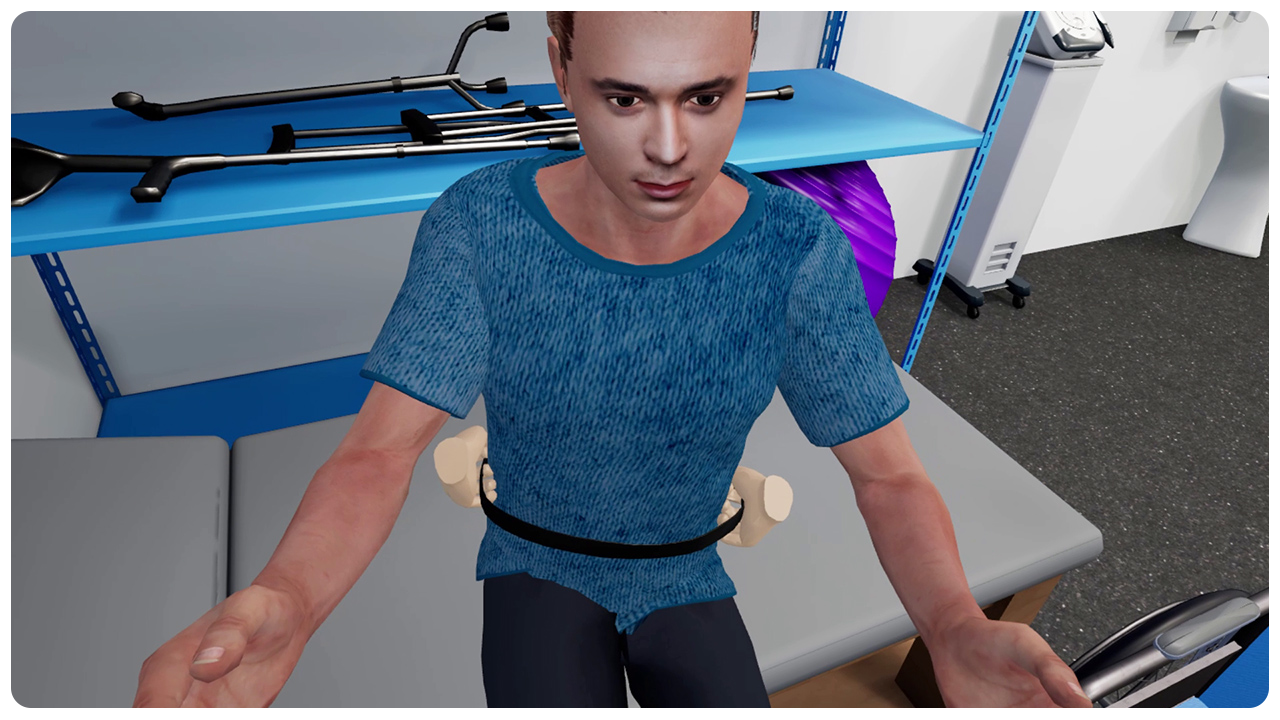
Patient Transfer
When assisting a patient in and out of a wheelchair or bed or any other immobile object, care must be taken to cause least possible fatigue and stress. The aim should be to move in such ways to take maximum advantage of gravity and momentum. The patient should be aware of the process being undertaken and the PTA should be well-versed and confident with the steps. In this VR training program, learners will practice the process of assisting a patient from a wheelchair on to the bed, using a transfer belt. The detailed and step-by-step procedure is designed in a manner to provide relevant and adequate practice of the process, helping physical therapy aides perform with confidence and ease.
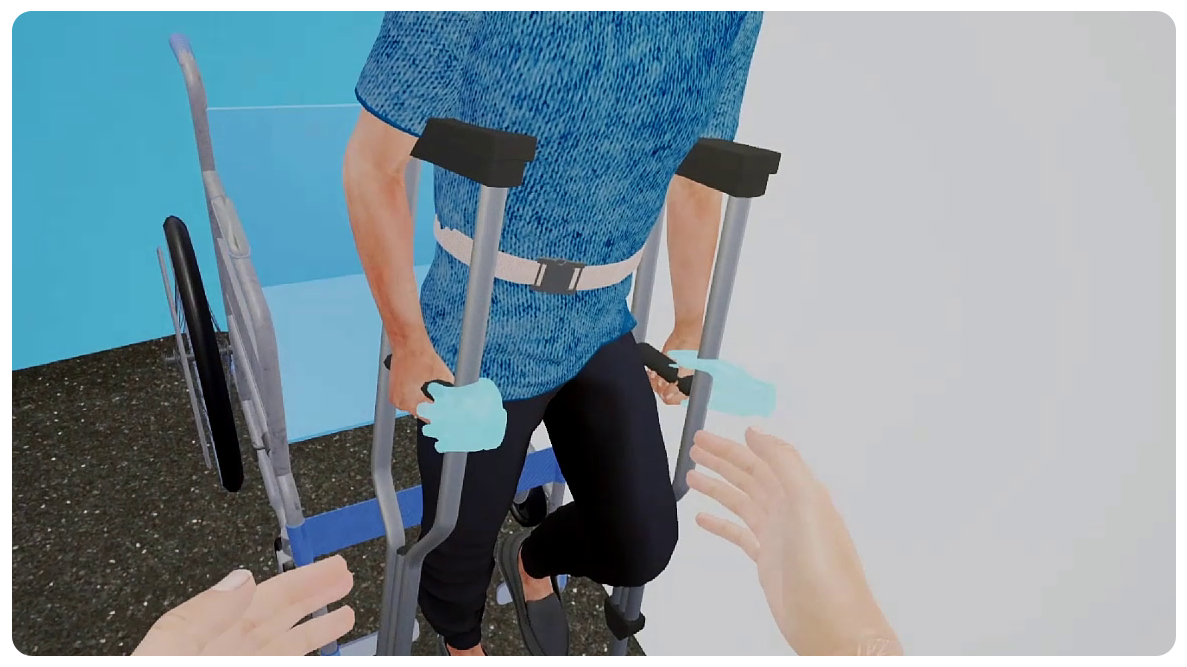
Assisting a Patient with Crutches
Physical limitations or disabilities that affect the lower extremities of the body may cause ambulatory problems for some patients. They may be prescribed ambulation devices to assist in their movement. These devices, like crutches and wheelchairs, are designed to facilitate individual movements without assistance. When initially prescribed, patients need to be trained to efficiently use these devices. In this VR training program, as physical therapy aides, learners will help assist virtual patients learn and get well acquainted with the three-point gait program. The activity is broken down into steps where learners can perform, learn, and improve, as required.

Range-of-Motion Exercises
Diseases causing movement disorders often result in a loss of balance and coordination. Through exercise programs like range of motion exercises, improvement in muscle control can be achieved. Range of motion exercises can be performed on the upper, lower or both extremities. These exercises involve performing movements of muscles and joints using the available range of motions. In this VR training program, learners will perform and practice the range of motion exercises on the upper extremity of a virtual patient, similar to what a learner would do with a real patient in a real-world set up. These steps provide aides with the much-needed practice to perform these activities in a smooth and confident manner.
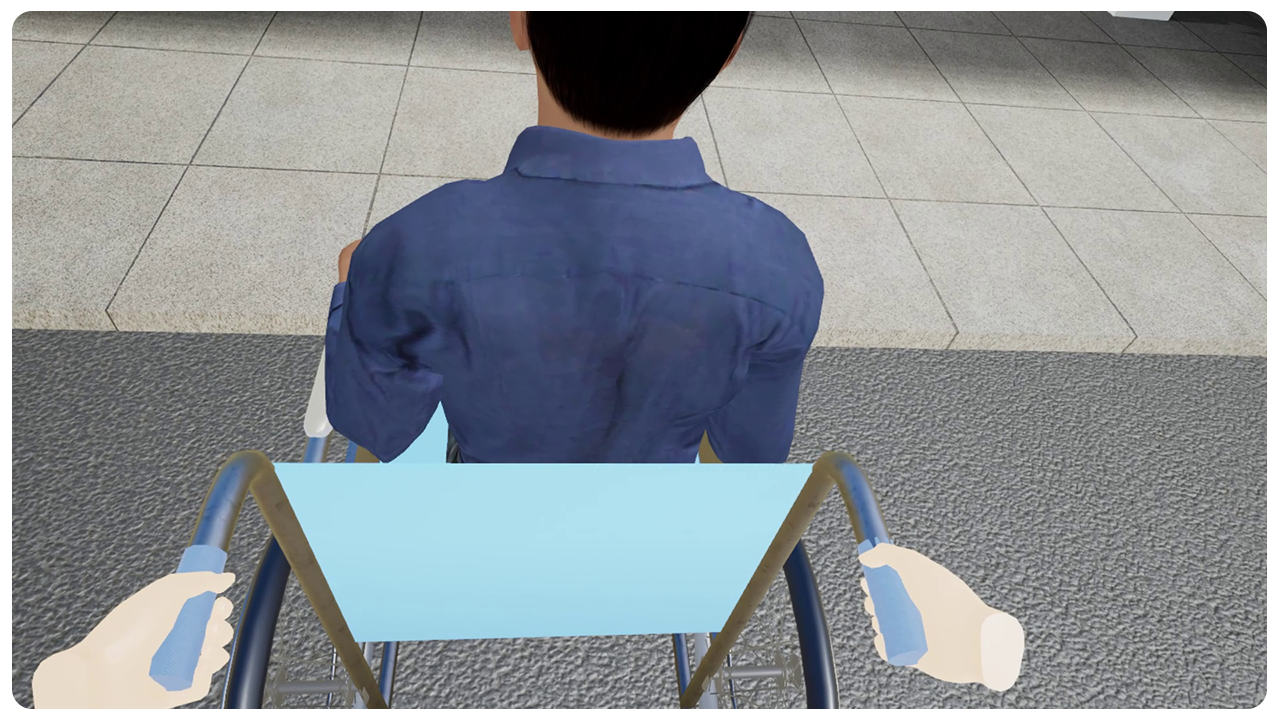
Ascending the Wheelchair
A patient arriving at a physical therapy facility may require help in being transported inside the building. As per policy of most facilities, a wheelchair is used for this purpose. All physical therapy aides must be well-versed with the procedure of assisting a patient, on a wheelchair, enter the facility as smoothly as possible. The presence of a curb may require additional care on the part of the PTA. This module helps a PTA practice the process of maneuvering a wheelchair with a patient onto a raised area. Following this step-by-step exercise, learners will be able to perfect the steps of the process which will help them execute the job in a real-world scenario with efficiency.
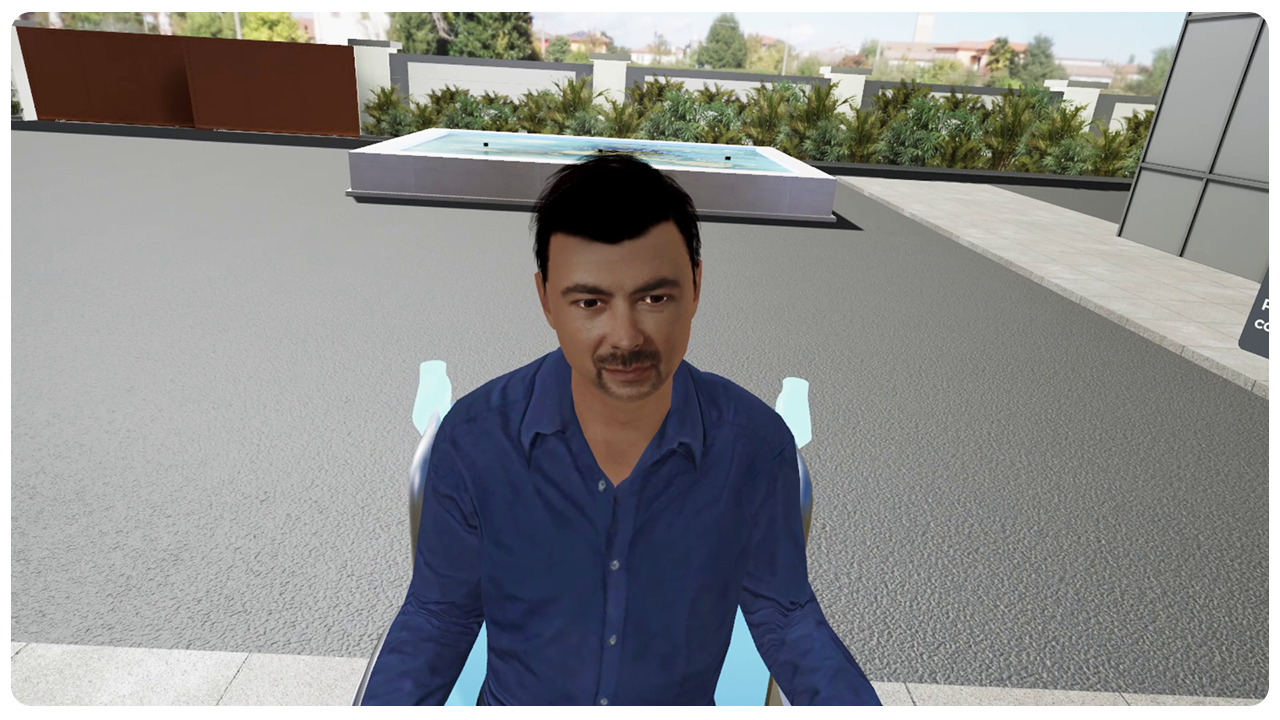
Descending the wheelchair
Helping a patient on a wheelchair descend a curb or any raised area needs a great deal of practice. The process should not cause any kind of discomfort or jerk to the patient as it may lead to further complications, in specific cases. As a PTA, before performing this activity in an actual facility, thorough practice sessions must be taken. This program offers learners step-by-step activities in the task of descending the wheelchair. The course is designed to encourage learners complete every step in the process and get perfect with their job and ensure patient safety.
Training
With prompts, guidance and affordances learners are hand-held through the process to practice the procedure in a virtual environment with a virtual patient.
- Photorealistic Virtual Environment
- Physics-based Interactions
- Learn by Doing
- Visual Affordances
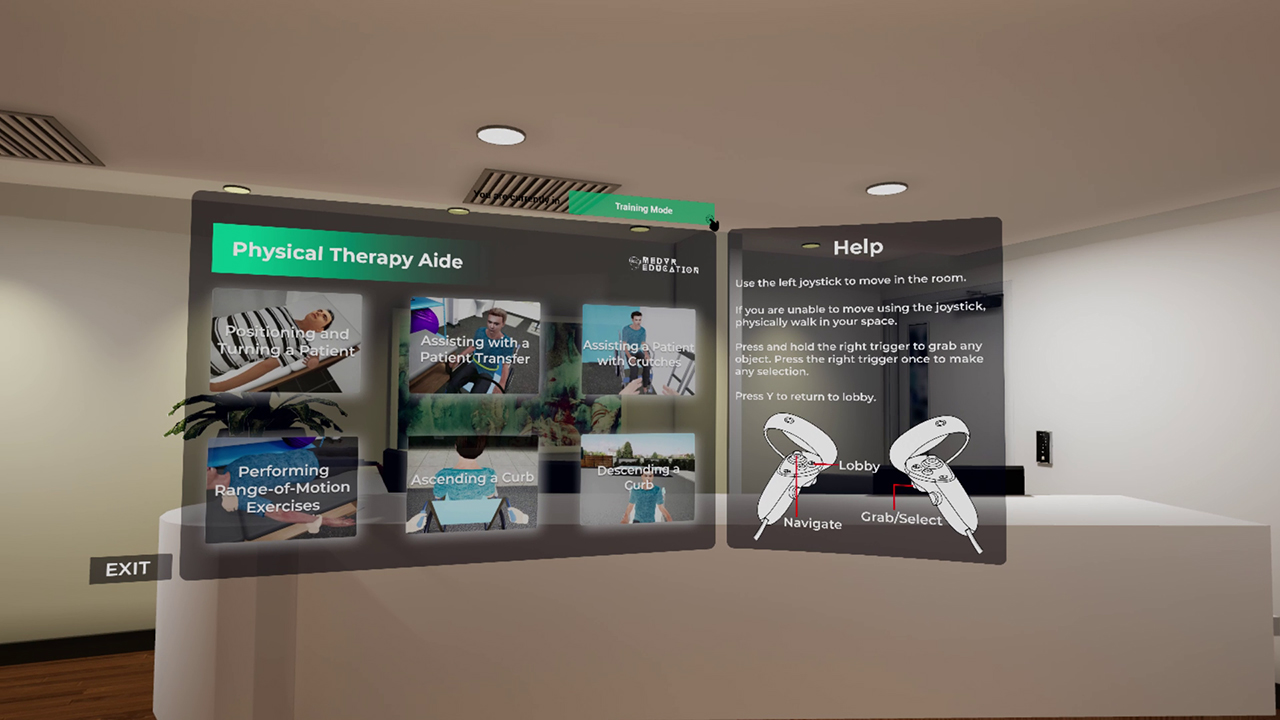
Assessment
Test skills to perform the procedures from start to finish without prompts. An incorrect step will take the learner back to the start to start afresh.
- Live Scoring
- Instant Feedback
- Unlimited Practice Sessions
- LMS Integration
